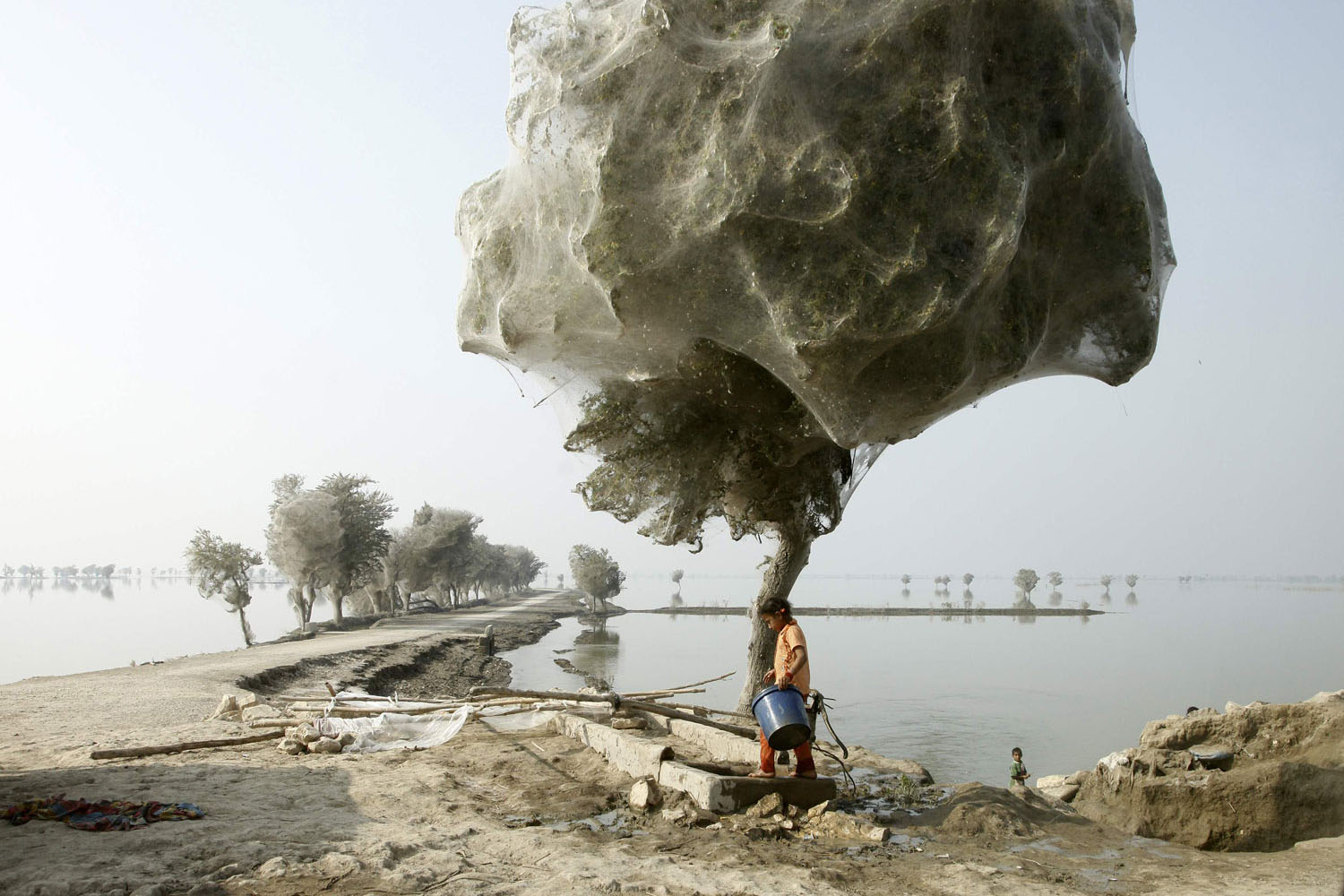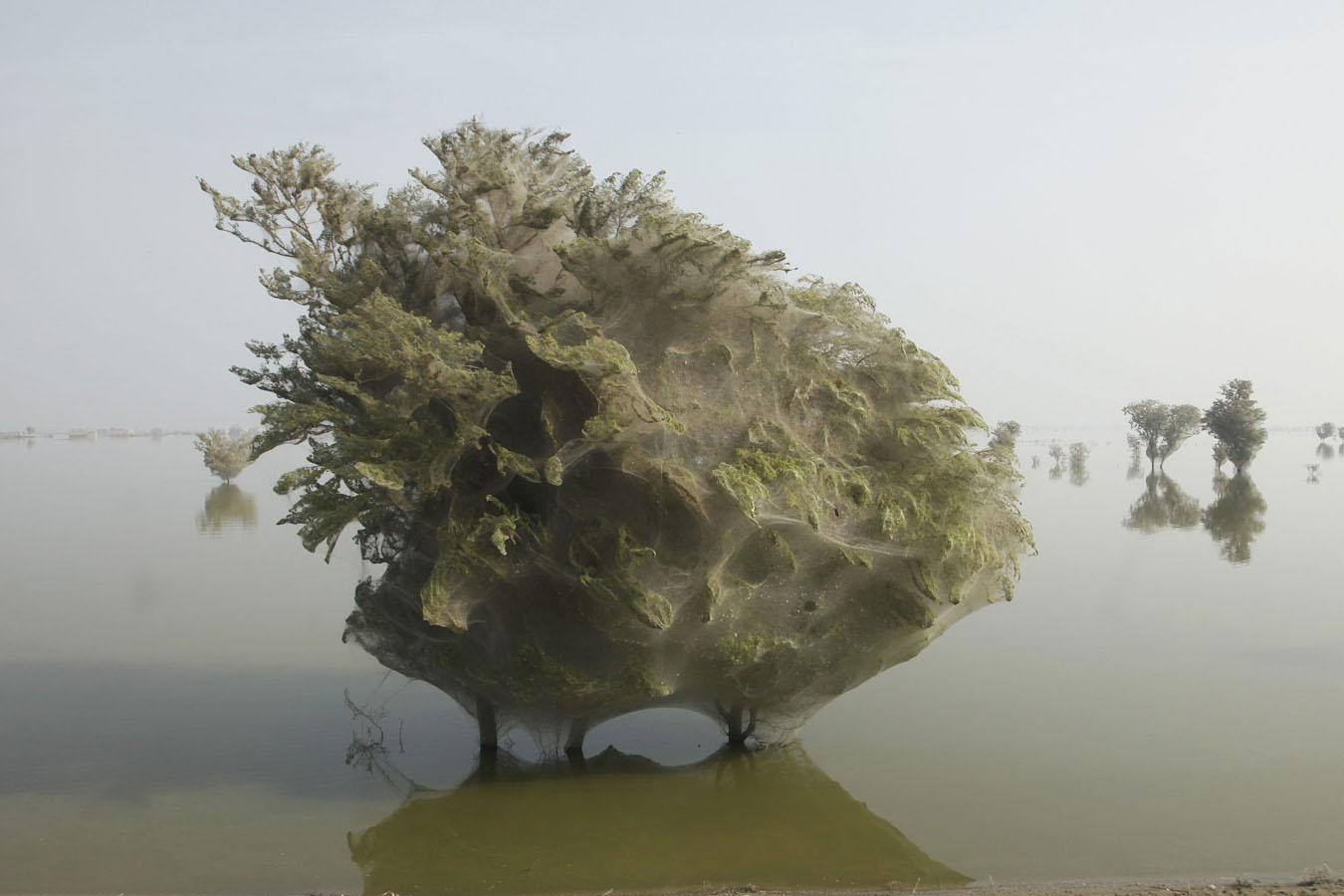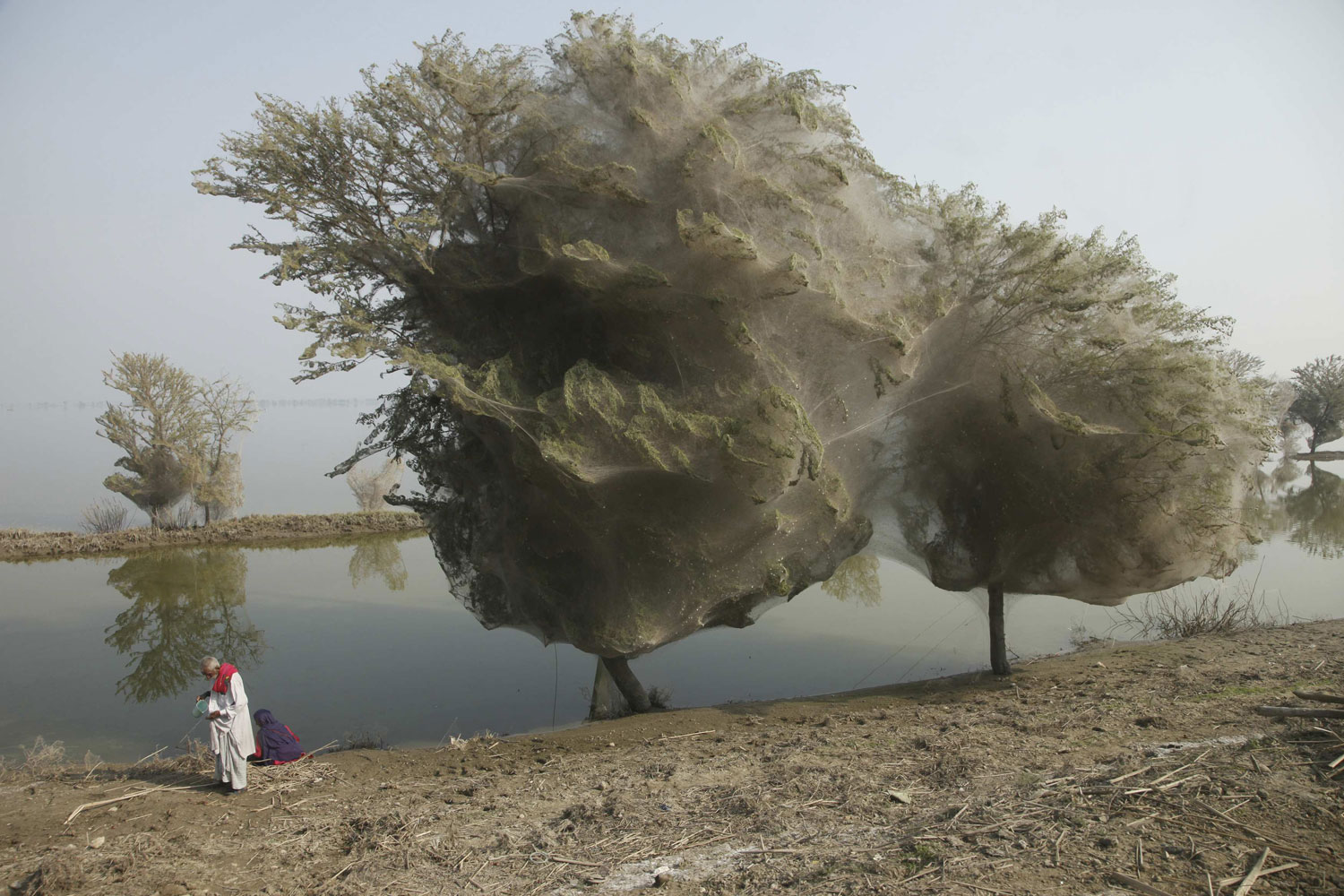
A few weeks after water from the devastating floods in Pakistan began to recede, photographer Russell Watkins traveled to the Sindh province to document humanitarian relief work funded by the UK’s Department for International Development. As he photographed the return home of the 10,000 people who had been displaced across an area the size of Lousiana, Watkins heard about an amazing phenomenon. In the absence of people, spiders had taken up residence in the trees to escape the floodwaters, creating a bizarre and dramatic scene. On visiting the area Watkins found that every single piece vegetation was covered with arachnids. “No one,” says Watkins who has traveled the world photographing relief work, “had ever witnessed anything like this before.” The rainy season dispatched most of the webs, but not before many of the trees, suffocated by the cocoons, had been killed. But there was one benefit. The risk of malaria was much reduced. Presumably most of the disease-carrying mosquitoes had been by caught amongst the spiders’ webs.



More Must-Reads From TIME
- The 100 Most Influential People of 2024
- The Revolution of Yulia Navalnaya
- 6 Compliments That Land Every Time
- What's the Deal With the Bitcoin Halving?
- If You're Dating Right Now , You're Brave: Column
- The AI That Could Heal a Divided Internet
- Fallout Is a Brilliant Model for the Future of Video Game Adaptations
- Want Weekly Recs on What to Watch, Read, and More? Sign Up for Worth Your Time
Contact us at letters@time.com